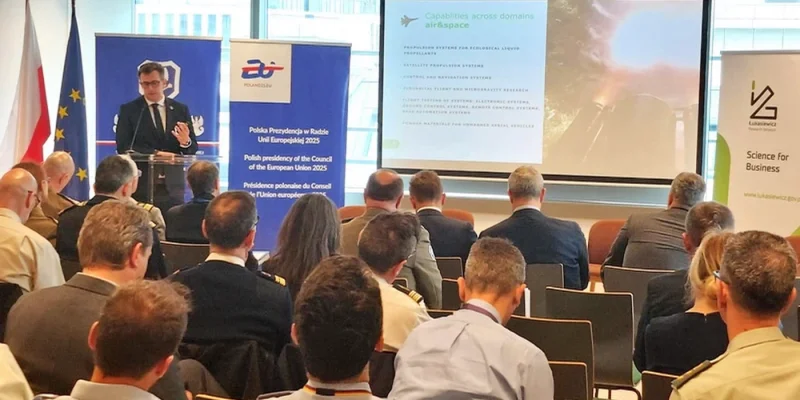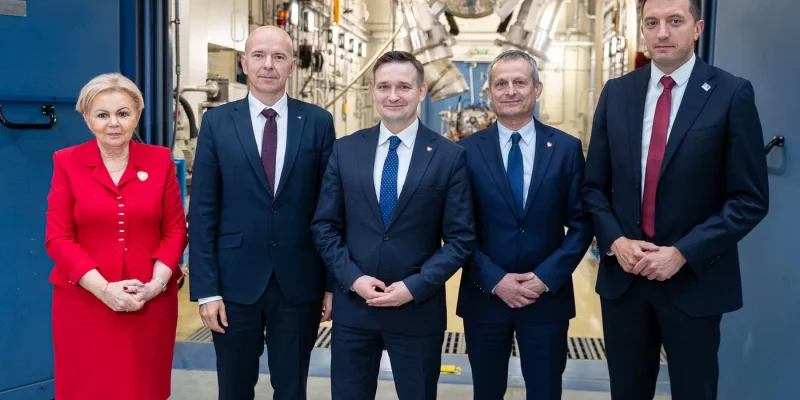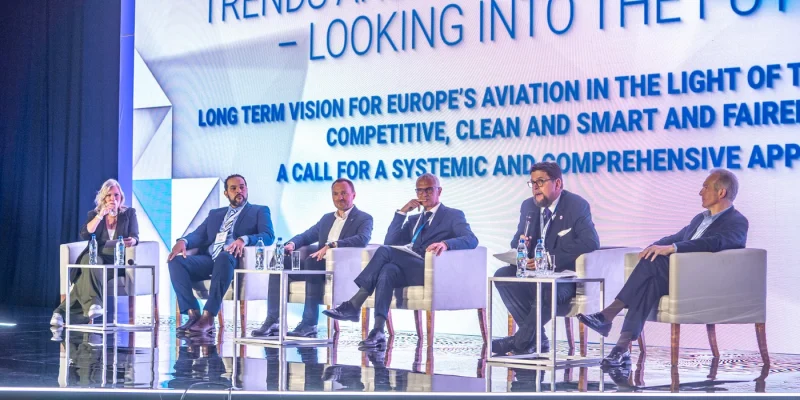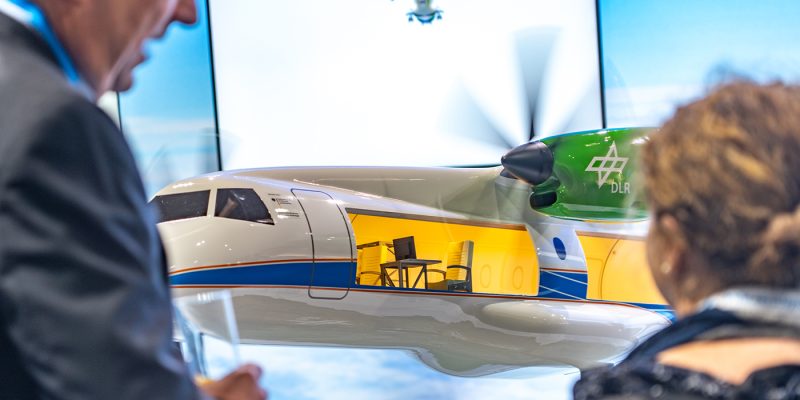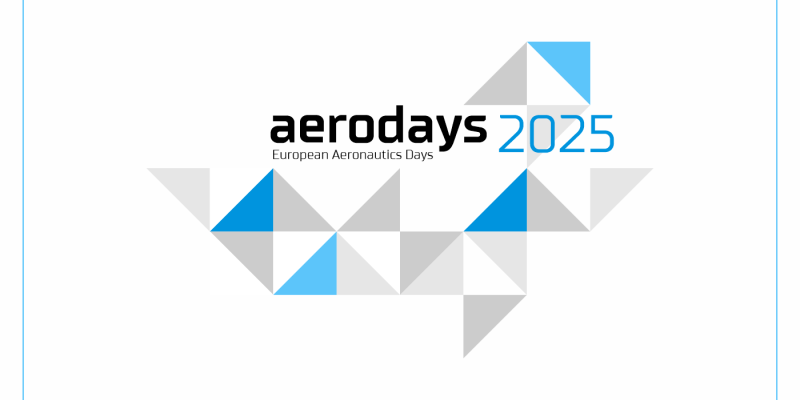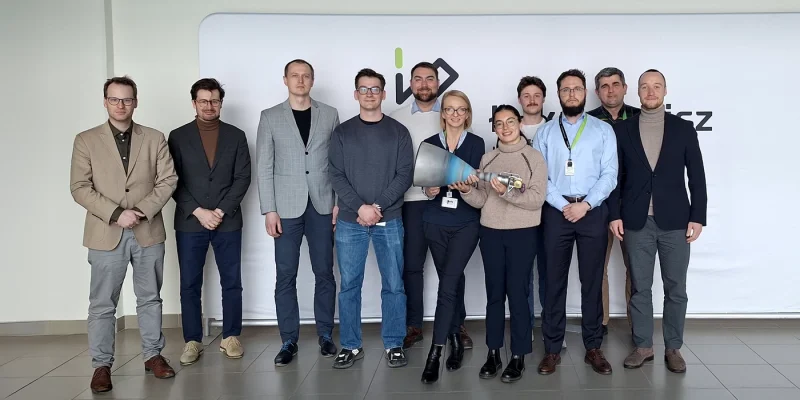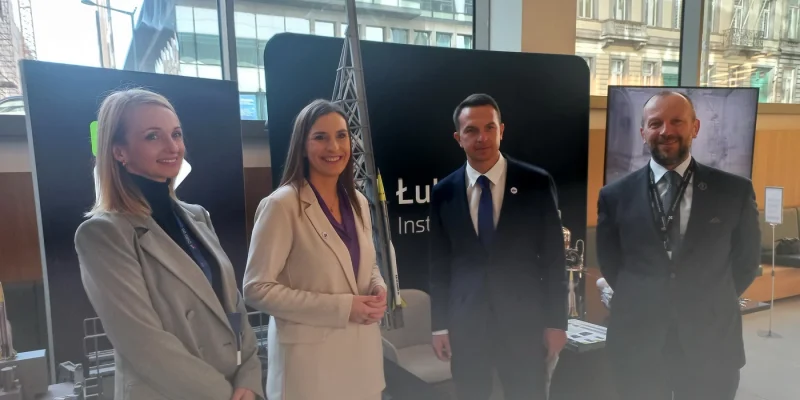On June 20-21, 2018, employees of the Institute of Aviation represented the Remote Sensing Division and the Space Technologies Division at the International Fair of Inventions and Innovation INTARG 2018, which was held at the International Congress Center in Katowice. The ILR-33 “Amber” rocket developed at the Institute of Aviation was awarded by the jury a platinum medal in the “industry” category and a diploma of the Ministry of Investment and Economic Development. A bronze medal in the “environment/chemistry/biotechnology/nanotechnology” category received the QUERCUS.2 multispectral platform.
INTARG is a tool for the promotion of innovative solutions, products, technologies and services from various areas, for their transfer to industry and commercialization, as well as provides a platform for direct contact between science and business representatives and entities supporting and financing research and development.
Hubert Skoneczny, from the Remote Sensing Division, presented the invention “QUERCUS.2 – lightweight, multispectral platform adapted for integration with Unmanned Aerial Vehicle”, which was awarded with a bronze medal in the category “environment/chemistry/biotechnology/nanotechnology”.
QUERCUS.2 multispectral platform was built in the Institute of Aviation, at the Remote Sensing Division in 2013. Platform operates within 2 spectral channels, has the ability to record data in the wave length range 460 – 950 nm (depending on the filters used) and is intended for the remote acquisition of images based on the registration of electromagnetic radiation.
The QUERCUS.2 lightweight platform (mass without a battery – 820 g) is dedicated to integration with the Unmanned Aerial Vehicle (UAV), and the use of two cameras and an algorithm, controlling the work of sensors, allows simultaneous images acquisition in two different wave lengths of light and performance, in real time, analysis of these images.
QUERCUS.2 was created for the LIFE HESOFF project to perform imaging of research areas – forests of three Forest Districts in the Krotoszyńska plate (Wielkopolska Voivodeship). The acquired material was used during the implementation of one of the main tasks of the HESOFF project – health evaluation of oak stands in regards of the assessment of phosphines influence.
Michał Pakosz, from the Space Technologies Division, presented a solution entitled “ILR-33 “Amber” rocket as a system of inventions and an innovative platform for experimental research in reduced gravity conditions”, which was awarded with the platinum medal in category “industry” and the diploma of the Ministry of Investment and Economic Development. Thus, the competition jury appreciated the potential of the project, which combines the research activities with industrial and military cooperation carried out during the tests.
The presented system of inventions included the European patent for the commercialized method for obtaining HTP class hydrogen peroxide, the Polish patent for a pyrotechnic reduction valve and pending patents concerning i.a. the method for obtaining a fuel grain for a hybrid rocket motor, the rocket separation system and the release mechanism for a launch pad.
The ILR-33 “Amber” is the world’s first rocket utilizing hydrogen peroxide of such high concentration (98%+).



